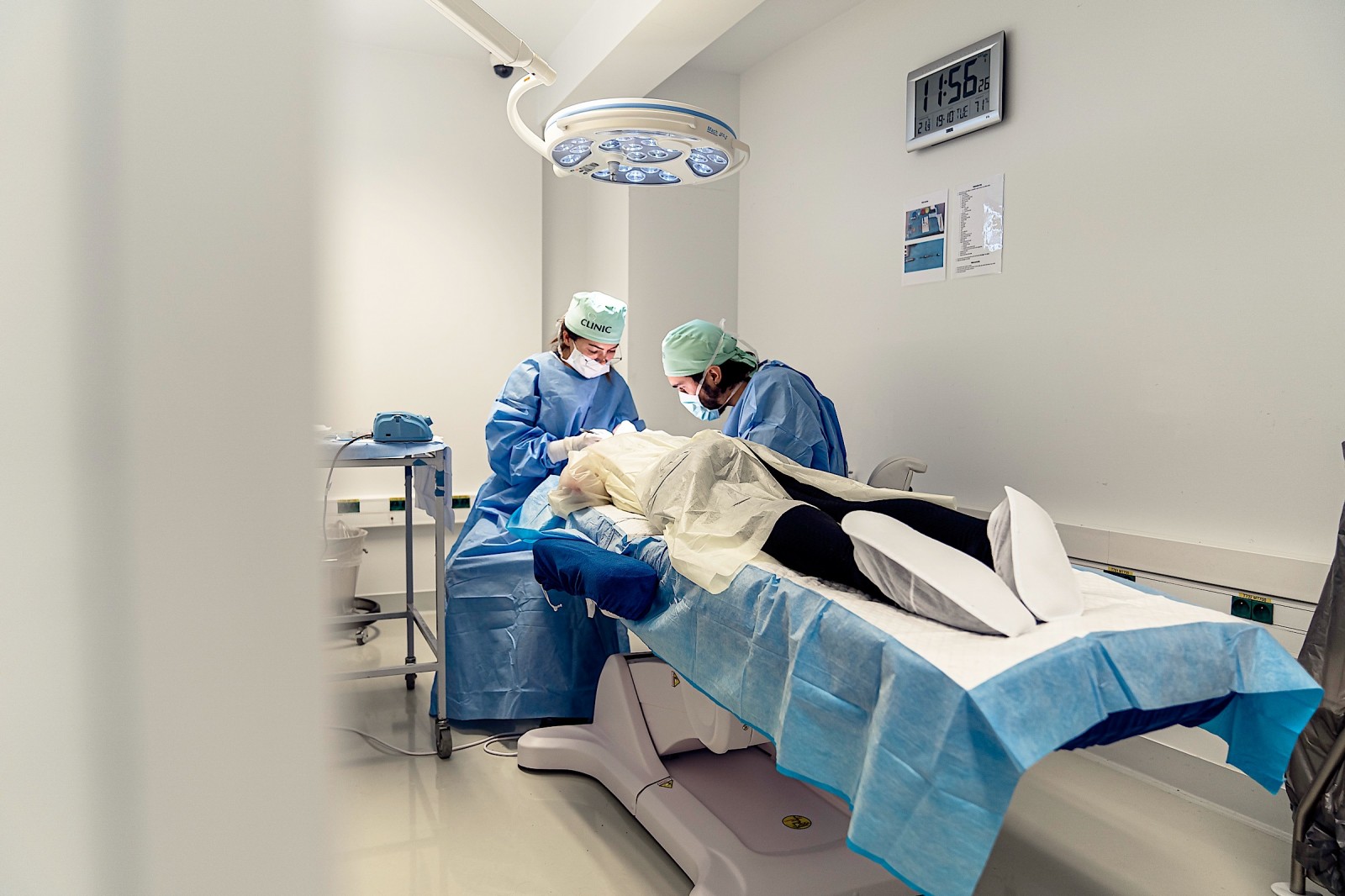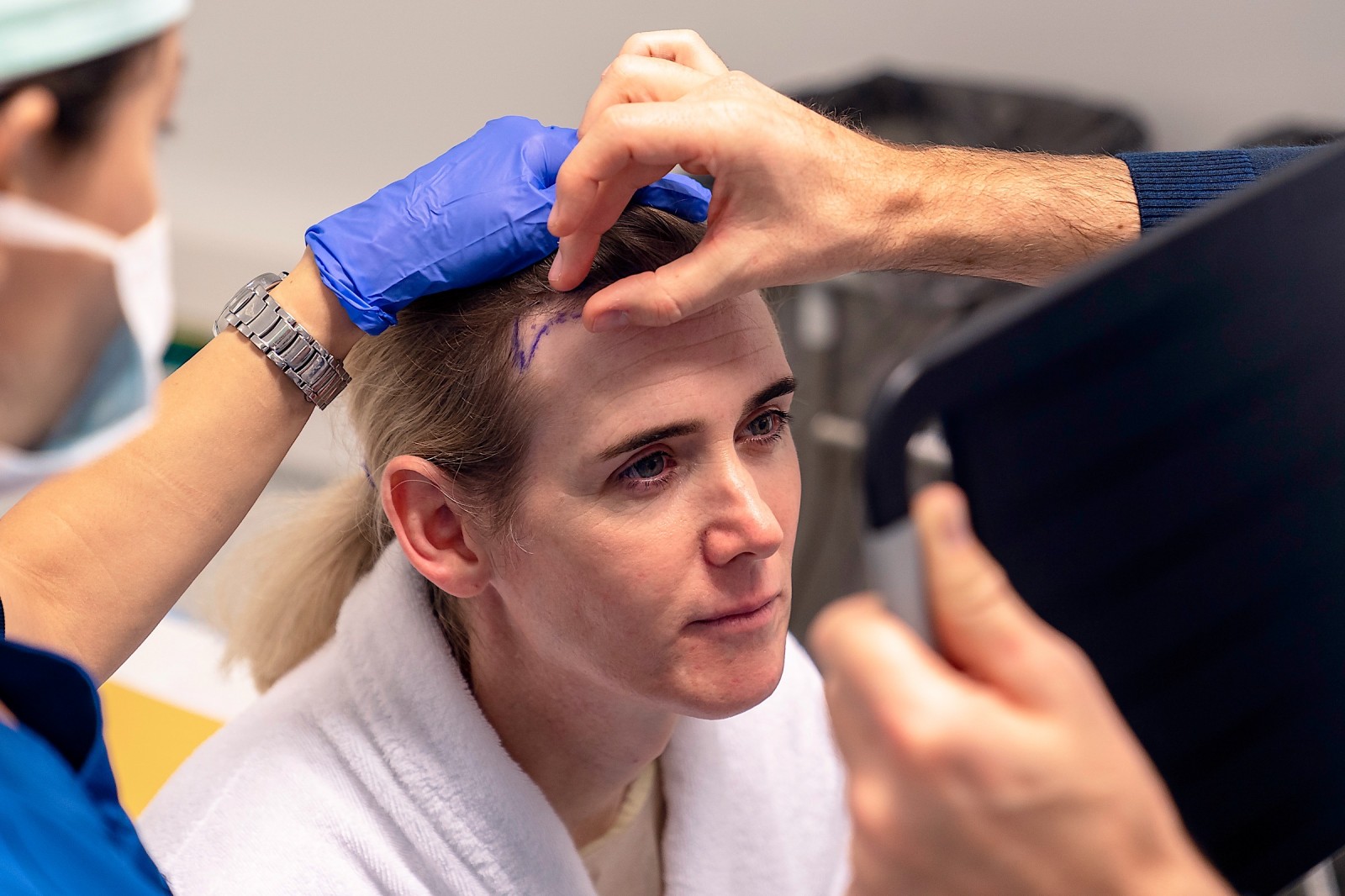Hair surgery
Hair transplants
A hair transplant is often the answer for people who are confronted with baldness or who want a full(er) head of hair. Various methods such as Direct Hair Implantation (DHI) or Follicular Unit Extraction (FUE) are possible. Together with you, we look for the best option. We provide a professional and transparent approach so that you know exactly what to expect.

More info about hair transplants
Hairline lowering
Scalp advancement techniques (hairline lowering) can be useful, especially if a forehead lift is desired as well or you need a forehead recontouring anyway. Our advice if you need forehead recontouring anyway is to first do a hairline lowering surgery and after do hair transplants to fill the rest of the widow peaks. You will need a lot fewer transplants by first lowering the hairline and on top, the density after hairline lowering surgery is very natural. A natural hairline density can be difficult to achieve with transplants alone.

More info about hairline lowering
Frequently asked questions
How many grafts do I need?
The number of hair follicles (grafts) that can be used for a hair transplant is limited. There are some 5,500 grafts in the donor area that can be used for a hair transplant. It is therefore not only a question of determining how many grafts are needed to improve the hairline/recipient area, but also how many grafts can be used to the maximum. Transplanting too many grafts at once can even cause hair density to deteriorate.
Is hair transplant surgery painful?
According to most patients, a hair transplant is not a painful experience. Patients are always given local anaesthetics and antibiotics to alleviate the discomfort. Most patients report that the procedure is pain-free and that the patient's recovery is not necessary. However, the procedure can take a long time as all hair follicles have to be harvested one by one.
How long does it take to recover?
After the operation:
The hair is NOT washed or styled. The hair is still loose so it would just fall out. The skin needs time to grow back together again. You will be given a bandage that must remain in place for at least 1 day. You could go back to work, but we recommend taking a week off to fully recover.After 2 days:
You'll have to stop by at our clinic for the first washing. The bandage will be removed cqarefully and your hair and scalp will be washed with with water and a mild shampoo. Avoid powerful shower jets but let the water drip gently over your head. Pat dry gently (do not rub). In this stage, slight swelling and scabs will form.After about 2 weeks:
The newly transplanted hair will fall out - this is normal.After about 3 weeks:
The follwoing activities can be picked up again: exercising and sports, sunbathing, visiting saunasAfter about 2 months:
The hair can be dyed again.After about 3 months:
The new hair will start to grow until about 12 months after your hair transplant. And of course, if you have long hair, the new hair will take a while to catch up.What is the difference between FUE and FUT transplants?
During an FUE hair transplant (= Follice Unit Extraction), hairs are harvested one by one from the donor area and transplanted into the recipient area. This is quite labour intensive for our specialists. Therefore, this method is more expensive and in addition, fewer grafts can be transplanted a day than an FUT hair transplant. Kinky-curly hair (e.g. 3 C of 4A, B or C) is very brittle and therefore not suitable for FUE treatment.
During an FUT hair transplant (= Follicle Unit Transplant), a strip of skin is removed from the donor area at the back of the head and reimplanted into the recipient area. This makes it slightly cheaper than FUE and faster, but a major disadvantage of this technique is that it leaves a scar in the donor area. For these reasons we do not use this method in our clinic.
Will I have to undergo an additional hair transplant in the future?
It is possible that your hair loss will continue. Especially if you have had a hair transplant at a young age. All transplanted grafts will continue to produce hair for the rest of your life, but the hair around them that you had at first could fall out at a later time. In that case, you could consider extra treatment.
What is the cost of hair transplant or hairline lowering surgery?
Hair transplants or hairline lowering surgeries vary greatly from patient to patient, which is why it is difficult to put a general price for hair surgery. It depends on what your wishes are, how large the zone is, which method you choose, how many grafts you will need, etc. The costs will be determined during your consultation or you can request a personalised quote to get an idea.
More information about our prices can be found here.
We are doing our very best to keep this information up-to-date. In case you see anything that no longer seems accurate, or in case you have a question, please fill out the form below.
